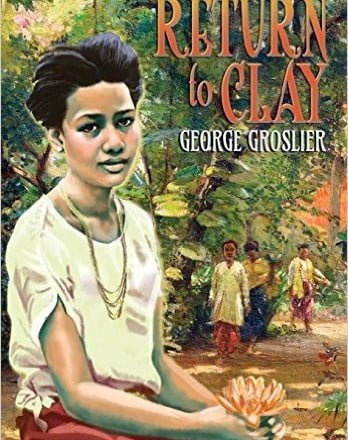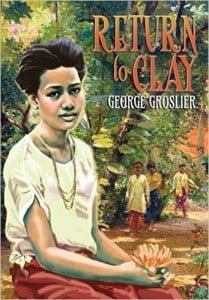Return to Clay - A Romance of Colonial Cambodia
Summary:
- Author (s):
- George Groslier (Author),
Kent Davis (Editor),
Henri Copin (Preface) - Release:
- 2014
- Category:
- Books
- Order a Copy:
- From Amazon →
Claude, however, gradually embraces the natural beauty, values and purity of the gentle kingdom. Then he meets Kamlang, a native girl with whom he forges “a relationship unlike any he had ever imagined, or could imagine, while still bound by his Western values.” His decisions result in anguish, betrayal, violence and – ultimately – epiphany.
George Groslier – one of the greatest witnesses of colonial Cambodia – won the 1929 Grand Prix de Littérature Coloniale for his tour de force novel, presented here in English for the first time, with the complete original French text.
“I will settle in the loveliest places,” proclaims the hero, late in the novel. This is the dream that Groslier, with his painterly talent and powerful, delicate pen, expresses so well, imbuing these places with some of the deepest significance to be found in the colonial period…Rejoice, dear reader, for you too can now discover these places, forever vanished yet eternally alive.
Professor Henri Copin,
Preface
About the author:
George Groslier (1887-1945), historian,curator and author wasthe motivating force behind much of the revivalof interest in traditional Cambodian arts and crafts. He dedicated his life and career to Cambodia, accumulating many titles and honors along the way. He was a champion of the arts, a man of science, photographer and painter,a novelist and writer, and an ethnologist who infused all of his works with passion and sensitivity.
Groslier was born in Cambodia on February 4, 1887. He died in Cambodia, the country he loved, under torture as a Japanese prisoner on June 18, 1945. His genius lives on through his works. Read More >
More on George Groslier
George Groslier’s Biography & Other Works
George Groslier’s Books on Amazon
George Groslier and the School of Cambodian Arts – Part 1
Khmer Crafts – George Groslier and the School of Cambodian Arts – Part 2
Royal Cambodian Dancers of Sisowath in 1927 Photos by George Groslier


